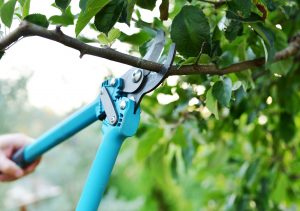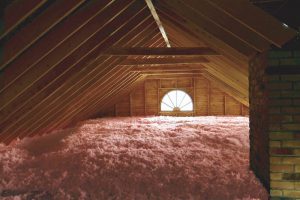 It may not yet look or feel like it when you go outside, but fall is nearly upon us!
It may not yet look or feel like it when you go outside, but fall is nearly upon us!
With the weather as nice as it is this week in Metro Vancouver (smoke aside), it’s normally a perfect time to get outside and start on your home maintenance tasks to make sure your home is taken care of once that crisp autumn weather arrives.
As per usual, we’ve put together a comprehensive checklist for you to follow, to make sure nothing is forgotten.
You shouldn’t expect to go out and get all these tasks done right away, but getting a head start on the work while the weather is still decent is a great way to set yourself up for success.
Checklist: Fall Home Maintenance
 Remove water hoses and drain outside faucets before the first frost sets in. Most modern homes utilize freeze-resistant hose bibbs that require little to no maintenance, but take into account the age of your home before relying on this. Keep in mind, they must not have anything attached that will prevent water fully draining from the interior of the faucet during freezing weather.
Remove water hoses and drain outside faucets before the first frost sets in. Most modern homes utilize freeze-resistant hose bibbs that require little to no maintenance, but take into account the age of your home before relying on this. Keep in mind, they must not have anything attached that will prevent water fully draining from the interior of the faucet during freezing weather.- Clean rain gutters and check downspouts. Debris can hold water and, when it freezes, can cause damage to the roof. Excess water also needs to be moved away from the foundation. You certainly do not want water flowing into your basement, crawl space or the lower floors. The mere weight of clogged gutters and all the water held up there may also cause the gutters to tear right off the home.
- Fall is the perfect time to correct soil grading to facilitate drainage away from the foundation, except into functional drains. Just one foundation crack can let in a large amount of water!
- Check the exterior of your home for cracks and holes that would allow wind, water or pest entry, but make sure you don’t get carried away. Never seal-up brick weep holes or weep holes at the bottom of modern windows or doors. Weep holes need to be open to provide drainage and ventilation for the space in behind.
- Fall is the perfect time for painting the exterior since wood surfaces will tend to be thoroughly dry after the long hot summer. Remember – horizontal surfaces will hold water and take far longer to dry out after rain occurs.
- Have your home checked for loose or damaged roof shingles before the rainy season begins.
 Trim tree limbs away from the roof and walls of your home as well as any connected utility wires (carefully).
Trim tree limbs away from the roof and walls of your home as well as any connected utility wires (carefully).- Weather-strip your garage door. Make sure the seal between your garage door and the floor is water-tight to prevent drafts and keep out pests. Check all other doors and windows for a tight seal.
- Cover air conditioners/heat pumps. After disconnecting the power, vacuum internal parts of air conditioners and remove units from windows. Clear vegetation from around your air conditioner to prolong the life of the unit.
- Clean yard equipment and prepare them for storage once you have finished using them. This includes draining fuel from all gas-operated equipment such as lawn mowers, leaf blowers and chain saws.
- Check the supports, stairs and railings on porches, balconies and decks. Make sure the handrails can support someone slipping/falling on the stairs.
- Probe the wood trim around windows, doors, railings and decks. Make repairs now before the fall rains do more damage to the exposed wood (i.e. rot).
- Inspect concrete slabs for signs of cracks or movement. All exterior pavements should drain water away from the home’s foundation. Fill cracks with a suitable crack-filler or caulk. When weather permits, power-wash and then seal the concrete/asphalt.
- Remove/relocate any firewood stored against the home. Firewood should be stored off the ground and at least two feet from the structure.
- Now is a great time to have your heating system serviced by a licensed heating (HVAC) contractor. A large majority of service companies are not that busy yet and may offer start-up maintenance specials. This includes cleaning and replacing filters, inspecting it fully to ensure there is no potential for carbon-monoxide poisoning and checking for efficiency. If you have your furnace/heating system serviced regularly, it will be more efficient, less likely to fail and should last longer.
 Check your attic for insulation levels and any damage by workers and/or rodents. You may have to have insulation removed and replaced to prevent a fire if chewed on by rodents, including squirrels.
Check your attic for insulation levels and any damage by workers and/or rodents. You may have to have insulation removed and replaced to prevent a fire if chewed on by rodents, including squirrels.- Clean or self-clean the oven in preparation for seasonal cooking/baking, vacuum the condenser coils at the back of your fridge at least annually and clean your kitchen exhaust hood regularly. Clean bathroom fans as well.
- Change the direction of ceiling fans to create an upward draft that redistributes warm air down from the ceiling level.
- Check for worn power cords and replace them immediately. Never use “permanent” extension cords.
- Change the batteries often in smoke alarms and carbon-monoxide detectors. This is not to be taken lightly as these devices are designed to save your life and that of your family. Ensure you have a reliable fire extinguisher on hand as well.
If you have any questions about home maintenance for the change of season or any other home or consulting needs, contact us at Duxbury & Associates today!

